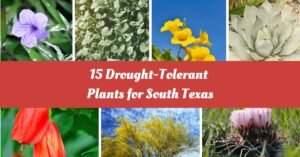In the scorching heat of North Texas, maintaining a lush and vibrant garden can be quite challenging. However, with the rising awareness of water conservation and the increasing need for sustainable gardening practices, the importance of drought-tolerant plants has never been more evident.
These hardy and resilient plants have adapted to survive in arid conditions, making them perfect additions to any North Texas garden.
Water-wise gardening has gained significant popularity in recent years, and for good reason. By incorporating drought-tolerant plants into your landscape, you not only reduce water consumption but also contribute to the preservation of this precious resource.
Embracing these plants not only ensures a beautiful garden but also aligns with eco-conscious principles, making it a win-win situation for both you and the environment.
Understanding Drought-Tolerant Plants
At the core of water-wise gardening lies the concept of drought tolerance. But what exactly makes a plant drought-tolerant?
These remarkable botanical wonders have evolved various mechanisms to thrive in low-water conditions, allowing them to endure extended periods of drought without compromising their health and beauty.
Benefits of Choosing Drought-Tolerant Plants For North Texas Gardens
Conservation of Water: Drought-tolerant plants have adapted to survive on minimal water, significantly reducing the need for regular irrigation. This conservation of water not only saves you money on utility bills but also helps alleviate water scarcity in the region.
Low Maintenance: Once established, drought-tolerant plants demand minimal care. Their ability to withstand dry spells means less time spent watering and more time enjoying a flourishing garden.
Resilience in Harsh Conditions: North Texas summers can be brutal, with scorching temperatures and limited rainfall. Drought-resistant plants showcase their resilience by maintaining their vitality even during the toughest weather conditions.
Diverse Options: Contrary to popular belief, drought-tolerant plants come in an array of shapes, sizes, and colors. From striking succulents to vibrant perennials, there’s a wide selection of drought-resistant species to suit every gardener’s preferences.
Attracts Wildlife: These plants often produce unique and beautiful flowers that can attract pollinators like butterflies and bees, adding a touch of wildlife charm to your garden.
Sustainable Landscaping: Incorporating drought-resistant plants into your garden contributes to sustainable landscaping practices. By reducing water usage and promoting local flora, you actively participate in preserving the delicate ecological balance of North Texas.
Best Drought-Tolerant Plants For North Texas
North Texas presents a unique and challenging environment for gardening, but fear not! With a diverse array of drought-tolerant plants at your disposal, you can create a stunning and resilient landscape that thrives in the face of water scarcity.
Let’s explore some of the standout drought-tolerant plants perfectly suited for North Texas:
1. Succulents & Cacti
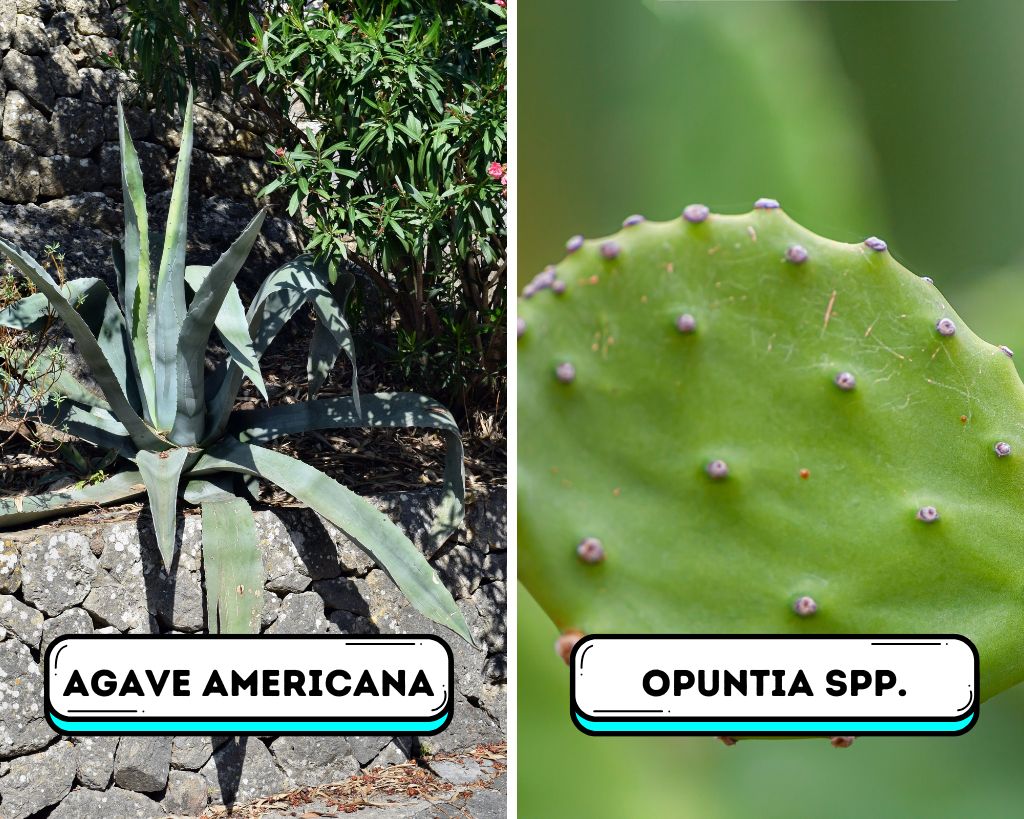
Agave americana (Century Plant): This striking succulent is a true showstopper with its bold, spiky leaves that can reach impressive sizes.
Once established, Agave americana requires minimal care and can tolerate long periods of drought, making it a robust addition to any arid garden.
Opuntia spp. (Prickly Pear Cactus): Known for its flat, paddle-shaped segments and vibrant flowers, the Prickly Pear Cactus is an emblem of the Southwest.
It thrives in hot, dry conditions and requires little water, making it a resilient choice for North Texas landscapes.
2. Ground Covers & Shrubs
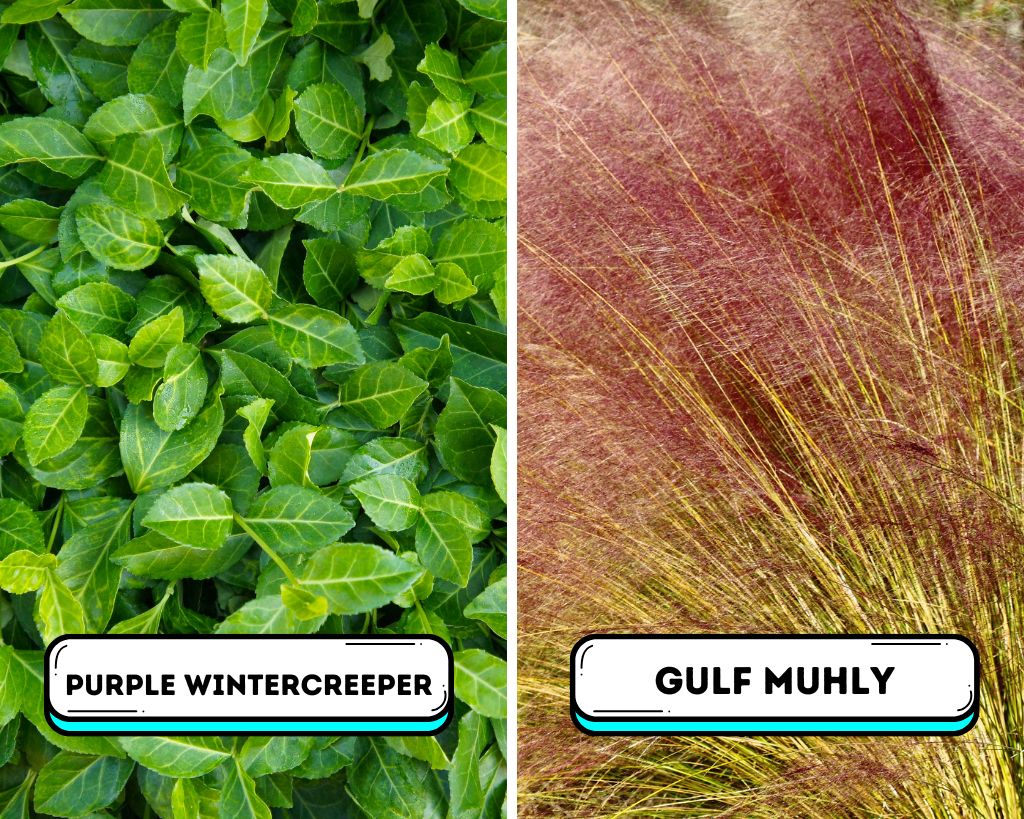
Purple Wintercreeper (Euonymus fortunei ‘Coloratus’): This low-growing evergreen shrub boasts stunning purple foliage that adds a splash of color to any drought-tolerant landscape. Purple Wintercreeper is not only drought-tolerant but also an excellent ground cover option for areas with poor soil and limited irrigation.
Gulf Muhly (Muhlenbergia capillaris): With its fluffy, pinkish plumes that sway gracefully in the breeze, Gulf Muhly is a beautiful ornamental grass that grow well in less water. It’s an ideal choice for adding texture and movement to your garden while conserving water.
Also Read: 8 Lamb’s Ear Companion Plants To Transform Your Garden
3. Privacy Hedges
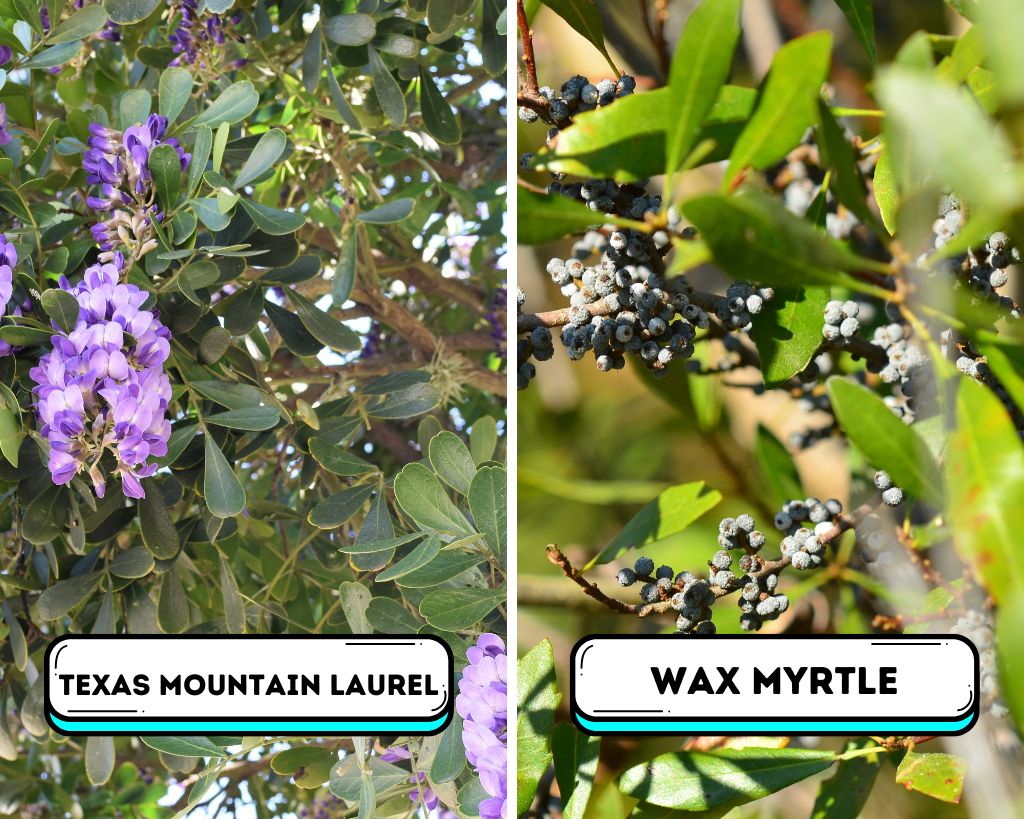
Texas Mountain Laurel (Sophora secundiflora): This evergreen shrub is a native to Texas that features fragrant purple flowers and glossy, dark green foliage. Texas Mountain Laurel is not only drought-tolerant but also offers privacy and serves as an attractive focal point in any landscape.
Wax Myrtle (Morella cerifera): Wax Myrtle is a versatile shrub that can be grown as a privacy hedge or trained into a small tree. Its dense, aromatic foliage and tolerance to drought and heat make it an excellent choice for North Texas gardens.
4. Flowering Trees
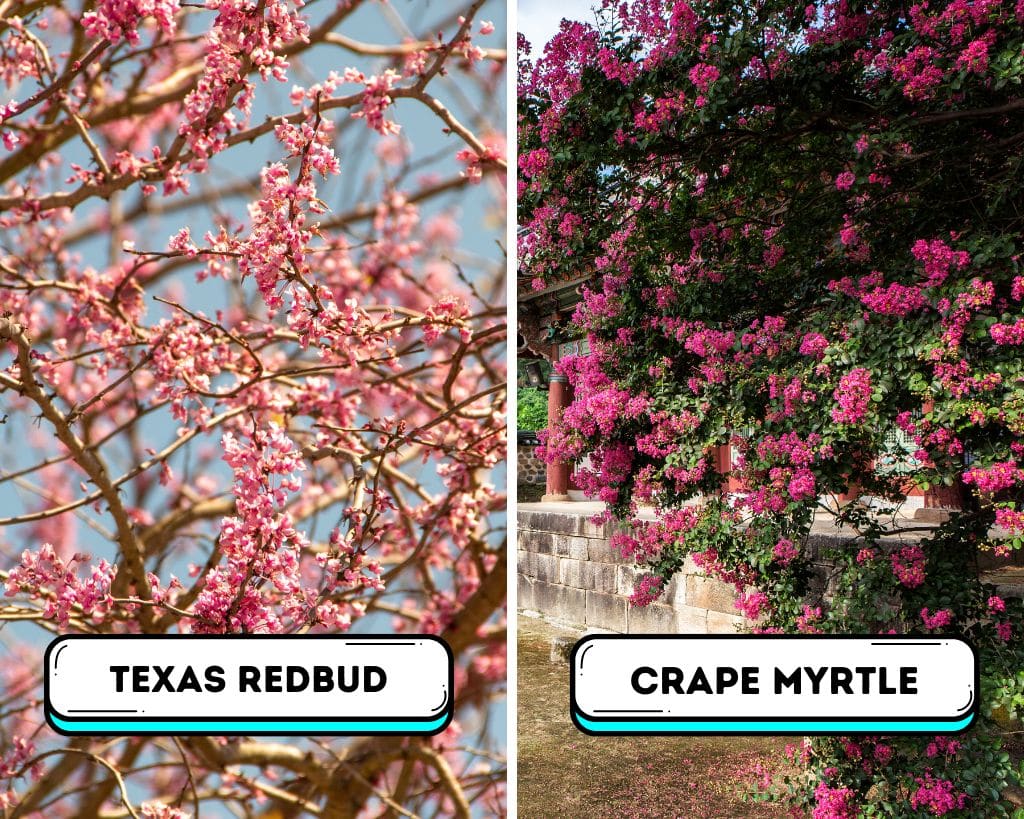
Texas Redbud (Cercis canadensis var. texensis): Known for its breathtaking pink flowers that herald the arrival of spring, the Texas Redbud is a resilient and drought-tolerant small tree. It adds a burst of color to the landscape and can tolerate various soil types.
Crape Myrtle (Lagerstroemia spp.): This iconic Southern tree is a favorite for its vibrant pink, purple, and white flowers and attractive bark. Crape Myrtles come in a variety of colors and sizes, and once established, they can withstand dry spells with ease.
5. Shade Trees
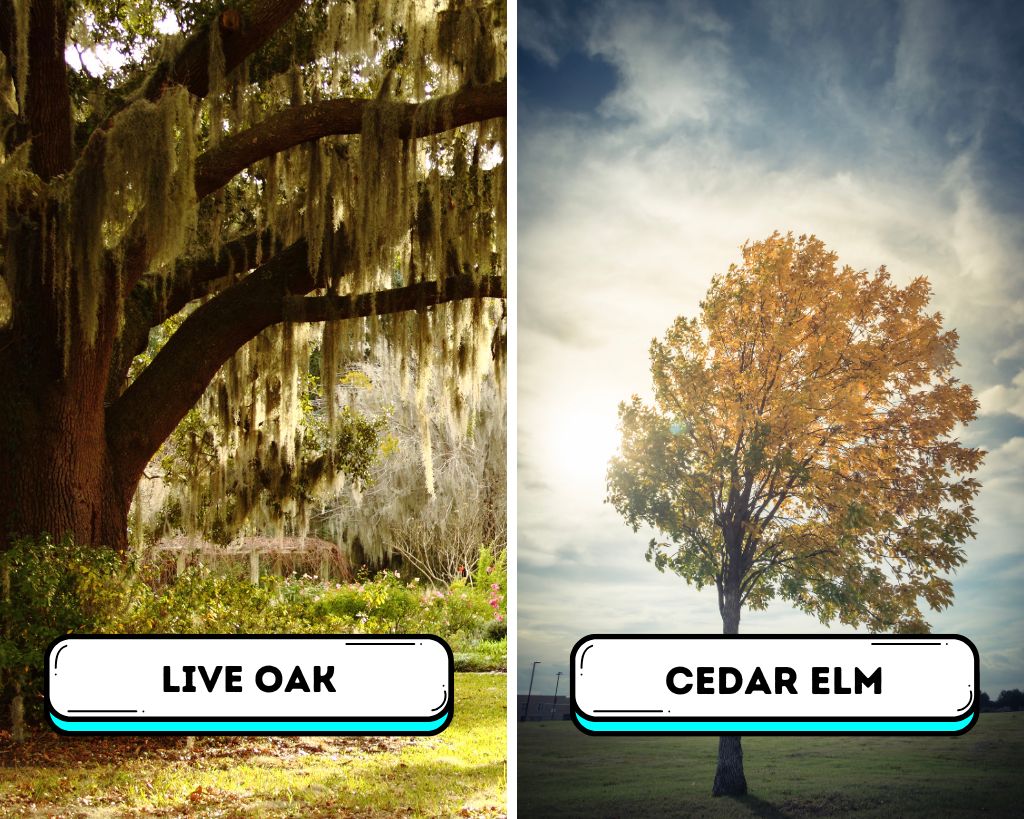
Live Oak (Quercus virginiana): As a symbol of strength and endurance, Live Oak trees are well-adapted to the challenging conditions of North Texas. They provide ample shade and require little watering once established, making them a popular choice for parks and urban landscapes.
Cedar Elm (Ulmus crassifolia): Cedar Elm is a native tree that thrives in full sun and dry environments. With its graceful arching branches and vibrant yellow fall foliage, this tree adds both beauty and shade to your garden.
6. Native Grasses
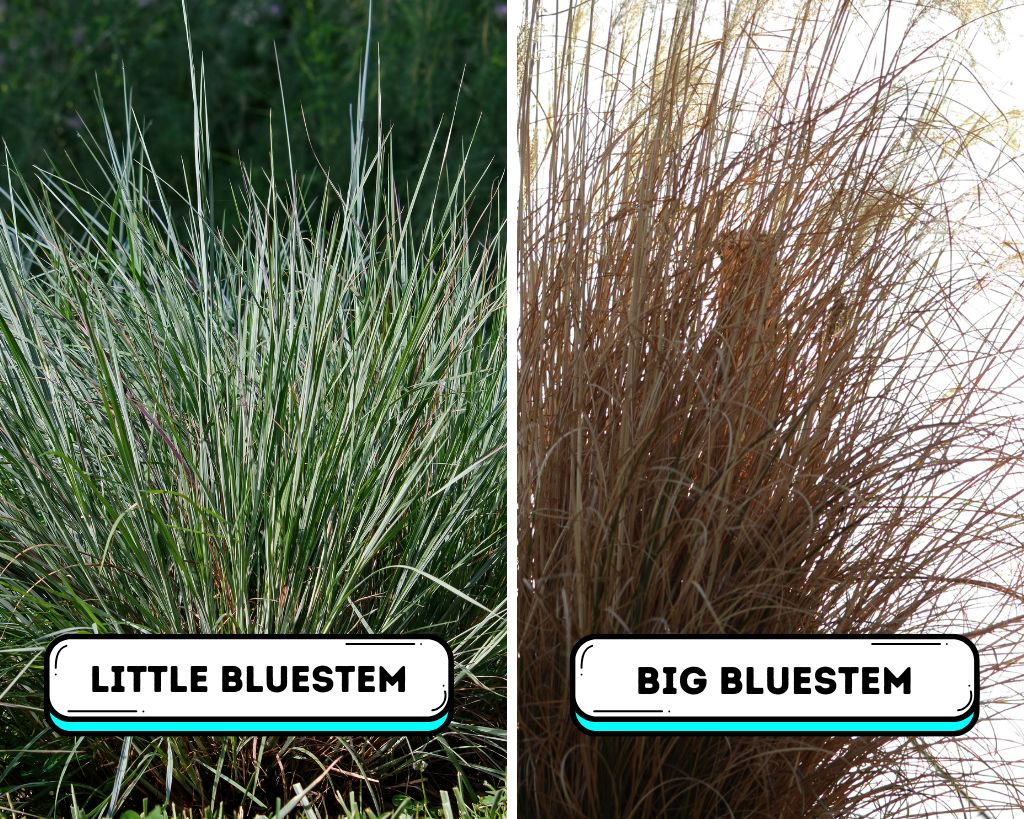
Little Bluestem (Schizachyrium scoparium): This native prairie grass offers a stunning display of reddish-brown foliage in the fall and can withstand drought conditions with ease.
Big Bluestem (Andropogon gerardii): Another native grass, Big Bluestem, stands tall with its blue-green stems and attractive seed heads. It’s an excellent choice for naturalizing areas with minimal water resources.
7. Wildflowers
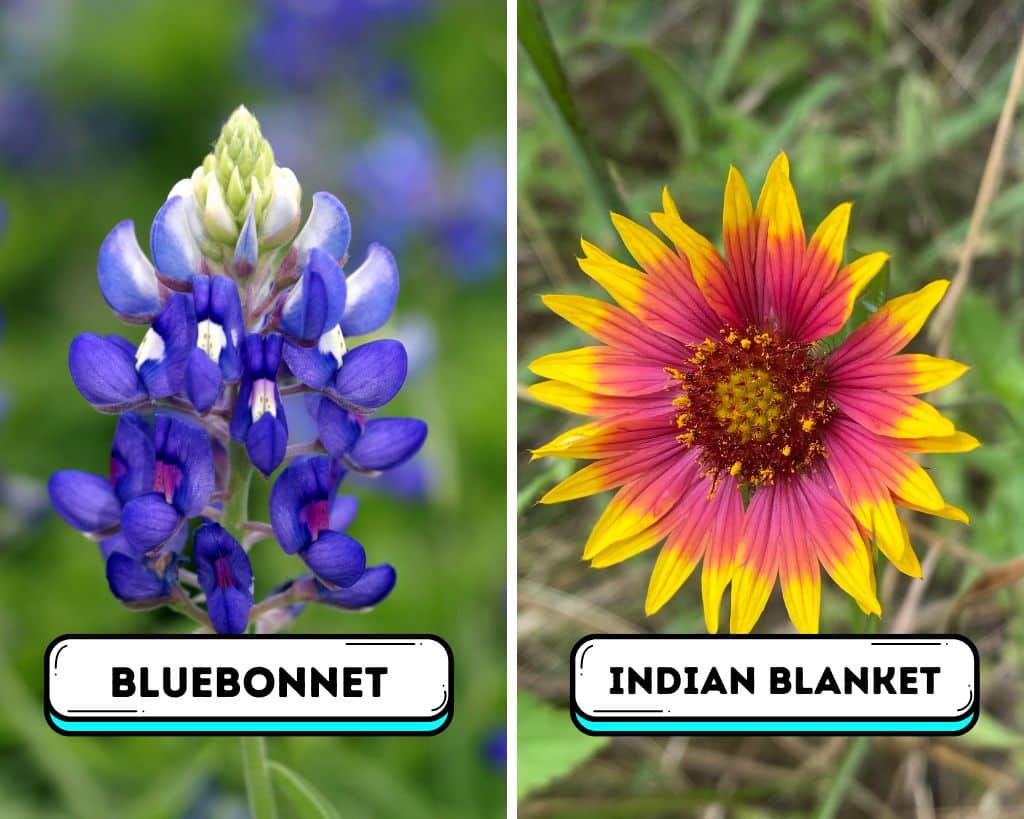
Bluebonnet (Lupinus texensis): As the state flower of Texas, the Bluebonnet is a beloved wildflower that carpets fields with its vibrant blue blooms. It thrives in sunny, dry conditions and is an essential part of North Texas landscapes.
Indian Blanket (Gaillardia pulchella): Also known as the Firewheel or Blanket Flower, this striking wildflower boasts vivid red and yellow petals. It’s a hardy plant that enhances the beauty of any drought-tolerant garden.
8. Desert Plants
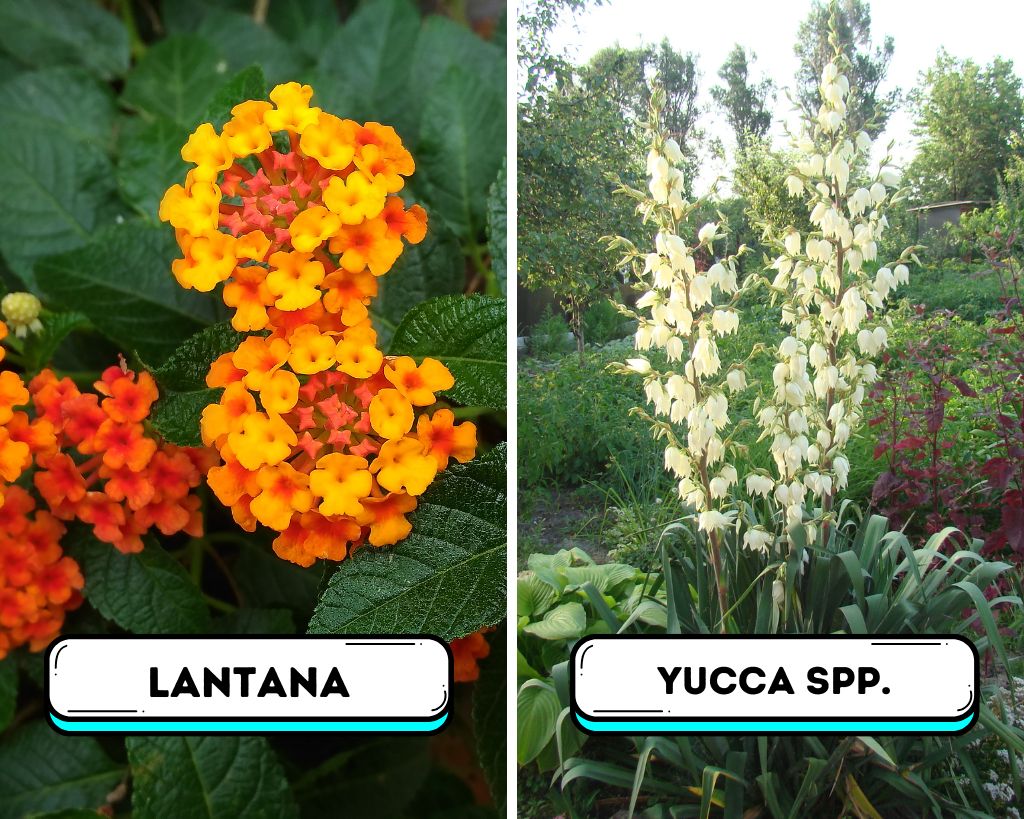
Lantana (Lantana Camara): It is a highly adaptable desert plant known for its drought tolerance and vibrant flowers. This hairy shrub is a great choice for desert inspired landscapes.
Yucca spp.: Yuccas are iconic desert plants known for their striking architectural form. They thrive in dry climates and add a touch of Southwestern charm to North Texas gardens.
9. Xeriscape Plants
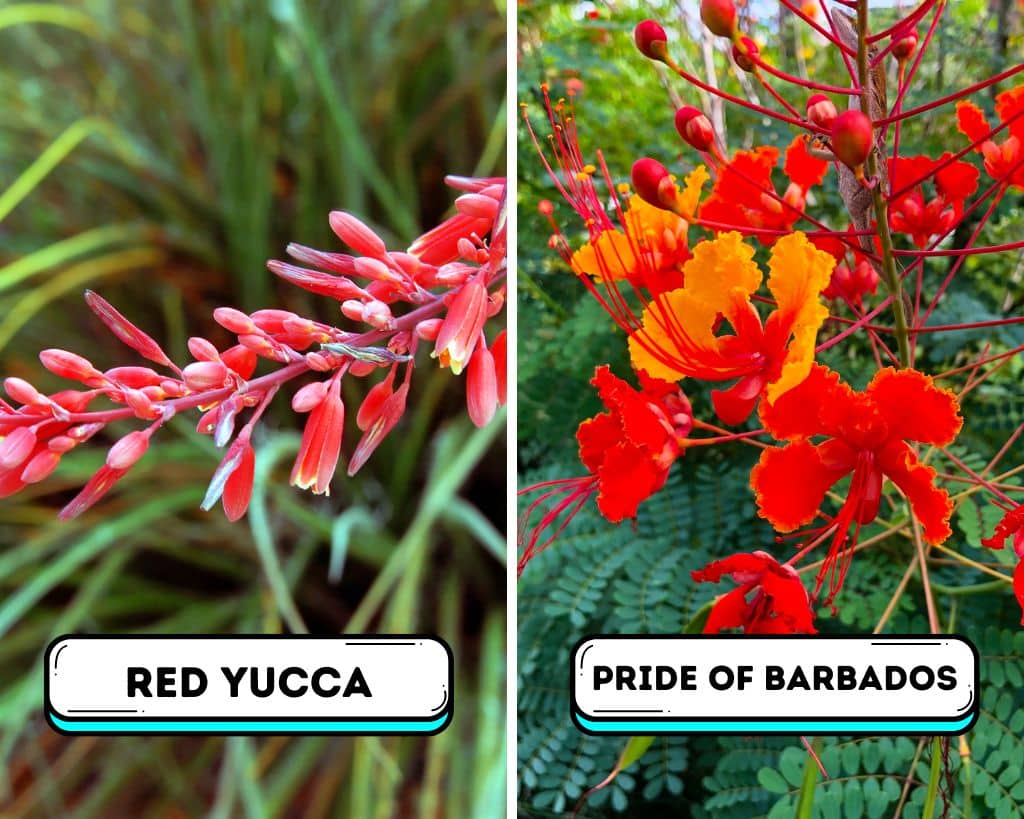
Red Yucca (Hesperaloe parviflora): With its red flowers and sword-like leaves, Red Yucca is a beautiful native plant that attracts butterflies and hummingbirds.
Pride of Barbados (Caesalpinia pulcherrima): This tropical beauty flaunts vibrant orange and yellow flowers and is surprisingly well-adapted to dry conditions.
10. Edible Plants
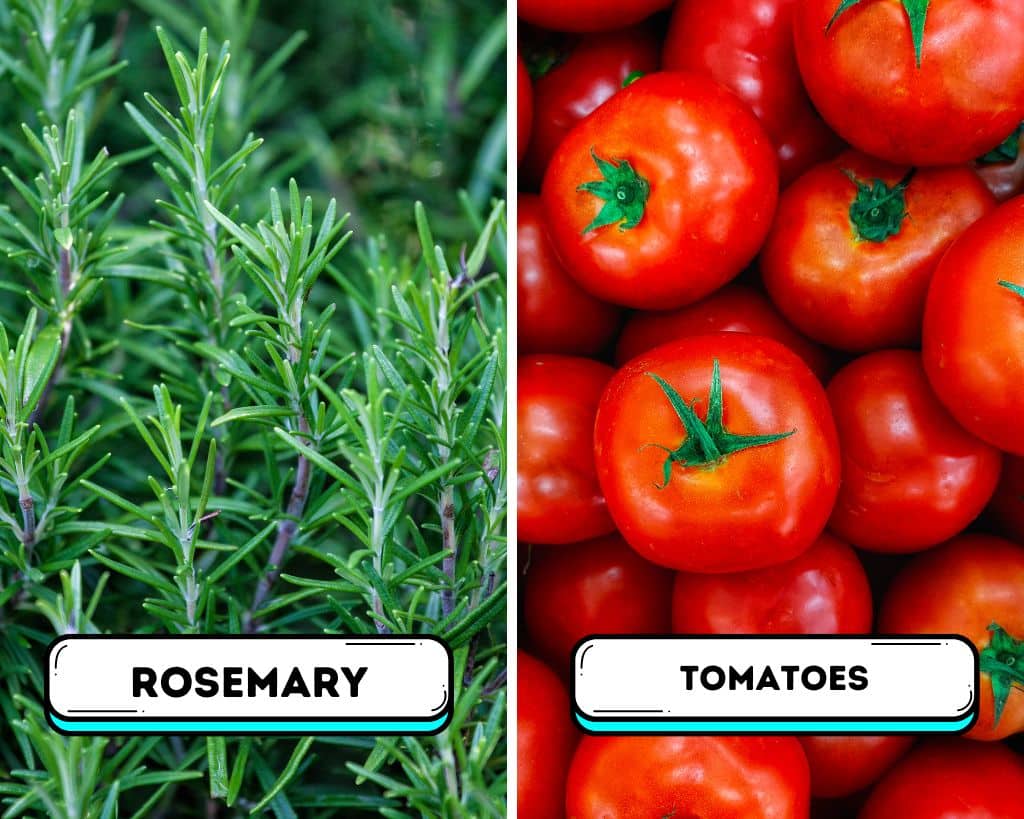
Rosemary (Rosmarinus officinalis): Not just a flavorful herb for cooking, Rosemary is also a hardy and drought-tolerant evergreen shrub that adds both culinary and ornamental value to your garden.
Tomatoes (Solanum lycopersicum): Growing tomatoes may require some watering, but with proper techniques like mulching, they can still thrive in a drought-resistant garden and provide delicious homegrown fruits.
11. Water-Wise Plants

Silver Ponyfoot (Dichondra argentea): This low-growing ground cover boasts of silvery foliage that form a dense mat, reducing evaporation and conserving soil moisture.
Purple Coneflower (Echinacea purpurea): This Texas native is known for its medicinal properties, the Purple Coneflower is not only a valuable addition to your garden but also supports pollinators with its nectar-rich blooms.
Conclusion
With these featured drought-tolerant plants, your North Texas garden can flourish even in the harshest conditions. Experiment with various combinations to create a landscape that reflects your personal taste and embraces the diverse beauty of North Texas..
Let’s make North Texas bloom and thrive, even in the face of drought. Happy gardening!


